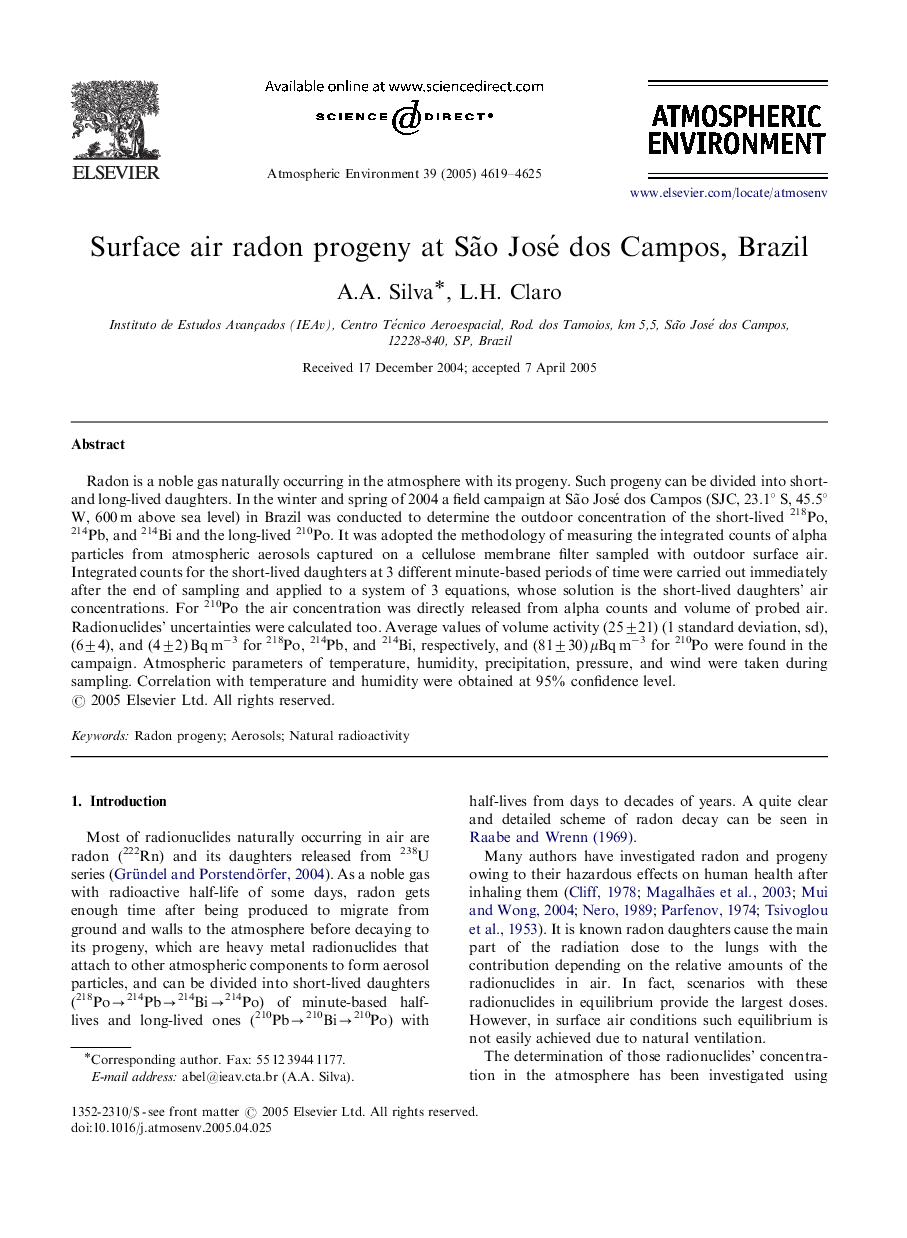| Article ID | Journal | Published Year | Pages | File Type |
|---|---|---|---|---|
| 4445418 | Atmospheric Environment | 2005 | 7 Pages |
Abstract
Radon is a noble gas naturally occurring in the atmosphere with its progeny. Such progeny can be divided into short- and long-lived daughters. In the winter and spring of 2004 a field campaign at São José dos Campos (SJC, 23.1° S, 45.5° W, 600 m above sea level) in Brazil was conducted to determine the outdoor concentration of the short-lived 218Po, 214Pb, and 214Bi and the long-lived 210Po. It was adopted the methodology of measuring the integrated counts of alpha particles from atmospheric aerosols captured on a cellulose membrane filter sampled with outdoor surface air. Integrated counts for the short-lived daughters at 3 different minute-based periods of time were carried out immediately after the end of sampling and applied to a system of 3 equations, whose solution is the short-lived daughters' air concentrations. For 210Po the air concentration was directly released from alpha counts and volume of probed air. Radionuclides' uncertainties were calculated too. Average values of volume activity (25±21) (1 standard deviation, sd), (6±4), and (4±2) Bq mâ3 for 218Po, 214Pb, and 214Bi, respectively, and (81±30) μBq mâ3 for 210Po were found in the campaign. Atmospheric parameters of temperature, humidity, precipitation, pressure, and wind were taken during sampling. Correlation with temperature and humidity were obtained at 95% confidence level.
Related Topics
Physical Sciences and Engineering
Earth and Planetary Sciences
Atmospheric Science
Authors
A.A. Silva, L.H. Claro,
